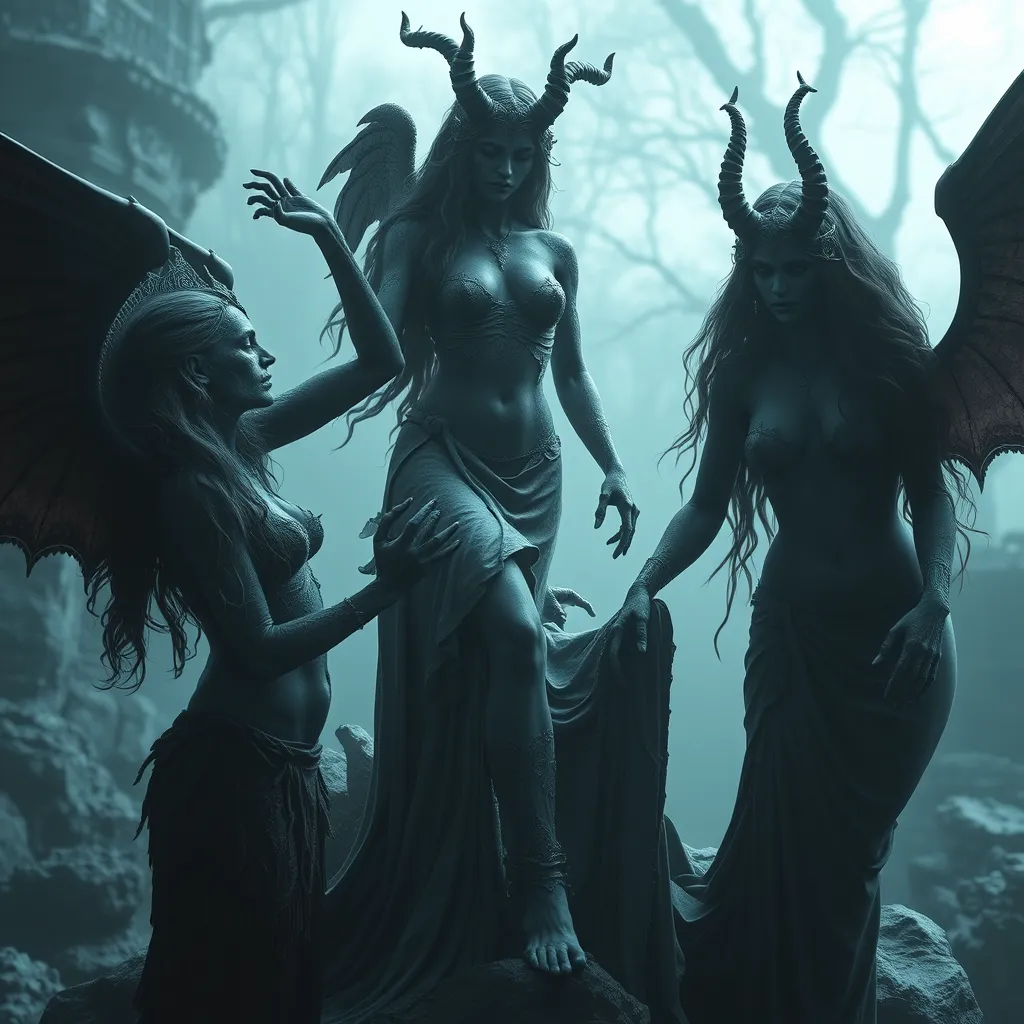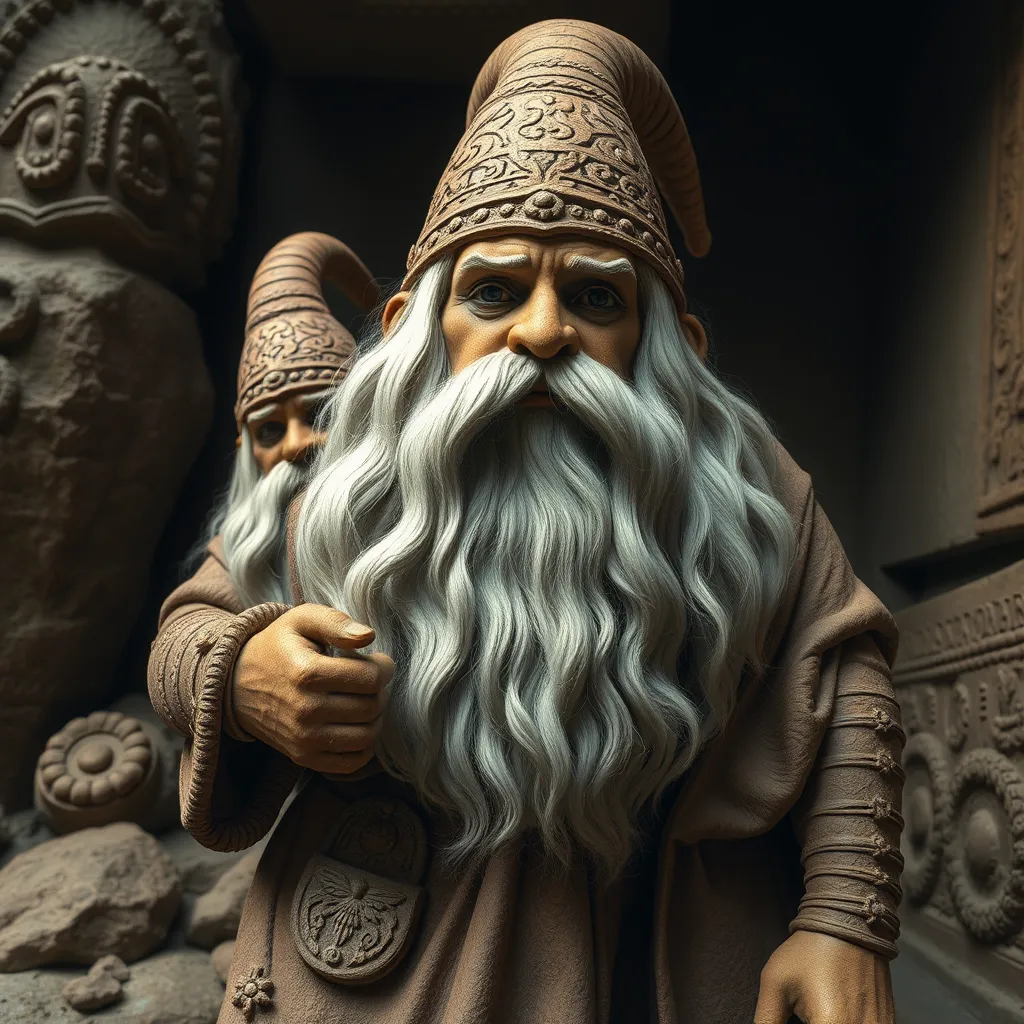The Nymphs of the Dead: Exploring the Lore of the Lamia and the Erinyes
I. Introduction
Nymphs have long held a significant place in mythology, often viewed as ethereal beings representing nature and the spirits of various natural elements. However, among these enchanting figures exist darker counterparts, particularly the Lamia and the Erinyes, who are deeply rooted in the themes of vengeance, loss, and the underworld.
This article will delve into the lore surrounding the Lamia and the Erinyes, examining their origins, characteristics, and the cultural impact they have had throughout history. By exploring these figures, we can gain insight into ancient beliefs about female rage, justice, and the complexities of the human experience.
II. The Lamia: Origins and Characteristics
The Lamia has its origins in Greek mythology, often depicted as a beautiful queen who fell victim to tragic circumstances. According to various myths, Lamia was once a lover of Zeus. In a fit of jealousy, Hera, Zeus’s wife, cursed her, leading to her tragic transformation.
Lamia is typically described as having a dual nature: her physical appearance could be stunning, but her true form was monstrous. She was said to possess the ability to shape-shift, which allowed her to enchant and deceive her victims, often leading to their demise.
This transformation from a beautiful queen to a monstrous figure symbolizes the profound effects of grief and loss. Lamia, in her monstrous form, became a predator, preying on children and embodying the ultimate anguish of a mother deprived of her own. This narrative showcases the intersection of beauty and horror, illustrating how tragedy can twist one’s essence.
III. The Erinyes: The Furies of Vengeance
The Erinyes, also known as the Furies, are another group of formidable figures in Greek mythology. They are often depicted as fierce deities of vengeance, tasked with pursuing and punishing wrongdoers. Their origins are steeped in the mythological narrative of retribution, particularly towards those who committed familial crimes, such as murder or betrayal.
The Erinyes are typically represented as women with snakes for hair, bloodshot eyes, and a terrifying demeanor. They embody the concept of justice in its most ruthless form, acting as enforcers of moral order. Their presence within the mythological landscape serves as a reminder of the consequences of one’s actions.
Symbolically, the Erinyes represent the darker sides of justice, emphasizing that every action has repercussions. They are not merely harbingers of punishment but also manifestations of collective grief and rage, highlighting the emotional turmoil surrounding betrayal and loss.
IV. The Relationship Between Lamia and the Erinyes
While the Lamia and Erinyes may seem distinct in their narratives, they share significant thematic connections. Both figures exemplify the complexities of female rage and sorrow, albeit in different contexts.
- Lamia: Represents the transformation of grief into monstrous rage, particularly in the context of motherhood and loss.
- Erinyes: Embody vengeance and justice, acting as the voices of the wronged, pursuing those who have committed transgressions.
Both figures highlight the consequences of betrayal and loss, serving as reminders of the emotional scars that can lead to destructive behavior. They illustrate how grief can manifest as both a personal and collective force, driving individuals to seek vengeance for perceived injustices.
V. Cultural Representations and Interpretations
The Lamia and Erinyes have been depicted in various forms of ancient art and literature, showcasing their multifaceted nature. In ancient Greek pottery, the Erinyes are often portrayed alongside mythological heroes, emphasizing their role as enforcers of justice.
In contrast, Lamia has been depicted in literature as a cautionary tale, warning against the dangers of unchecked desire and jealousy. The representations of these figures have evolved over time, with modern adaptations often reinterpreting their stories to fit contemporary narratives.
- Ancient Art: Pottery, sculptures, and paintings often illustrate their roles.
- Modern Adaptations: Films, novels, and graphic novels reimagine their narratives, reflecting societal changes.
This evolution demonstrates not only the timelessness of their stories but also society’s shifting attitudes toward themes of vengeance, loss, and female empowerment.
VI. The Psychological and Social Implications
The Lamia and the Erinyes represent powerful psychological archetypes within mythology. They encapsulate the complexities of female rage and the societal implications of victimhood. In many narratives, these figures reflect the struggles women face in a patriarchal society, navigating their emotions within restrictive cultural norms.
Discussion surrounding these figures has become increasingly relevant in contemporary feminist discourse. They challenge societal attitudes toward female anger, illustrating that rage can stem from profound suffering and injustice.
- Psychological Archetypes: The Lamia symbolizes the painful transformation caused by loss, while the Erinyes represent the unyielding nature of vengeance.
- Societal Attitudes: The stories of Lamia and Erinyes provoke discussions on how society perceives female anger and victimhood.
Understanding these figures provides insight into the narratives that shape women’s experiences and the societal structures that often silence their voices.
VII. The Legacy of Lamia and Erinyes in Popular Culture
The Lamia and Erinyes have left an indelible mark on modern culture, appearing in various forms of literature, film, and art. Their legacy continues to evolve, with contemporary interpretations often challenging traditional narratives.
Examples of their presence in popular culture include:
- Literature: Many authors draw inspiration from these figures to explore themes of vengeance, loss, and femininity.
- Film: Movies often reimagine their stories, presenting them as complex characters rather than mere villains.
- Art: Contemporary artists reinterpret these figures to address modern social issues, including gender inequality and the quest for justice.
This ongoing fascination with Lamia and Erinyes highlights their enduring relevance and the powerful narratives they represent, resonating with audiences across generations.
VIII. Conclusion
In summary, the Lamia and the Erinyes serve as profound symbols within Greek mythology, representing the complexities of female rage, justice, and transformation. Their stories remind us of the emotional depths associated with loss and the consequences of betrayal.
As we reflect on their relevance in today’s cultural landscape, it becomes evident that understanding these mythological figures is crucial for shaping societal narratives around gender, justice, and emotion. Through their stories, we gain insight into the timeless struggles that continue to resonate in contemporary society.
In exploring the lore of the Lamia and Erinyes, we not only uncover the rich tapestry of mythology but also the lessons that can guide our understanding of human experience and emotion.



